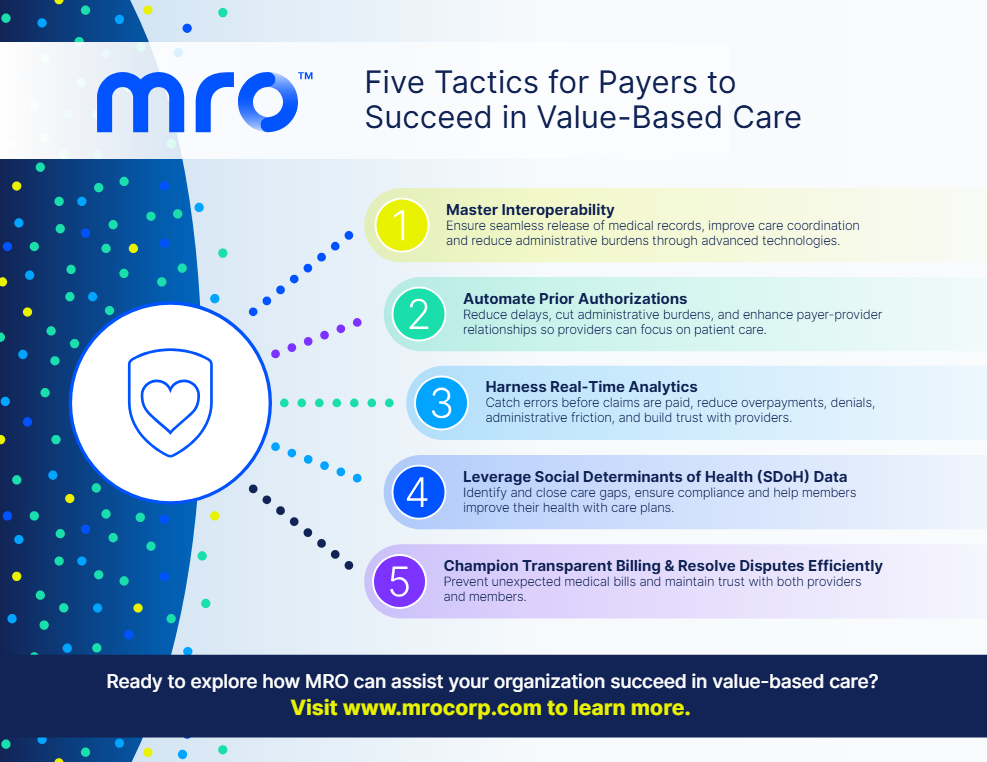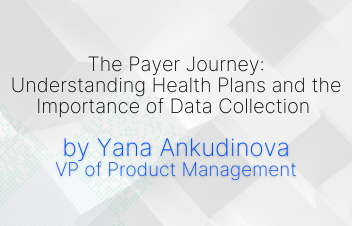The Centers for Medicare & Medicaid Services (CMS) has set a bold goal: by 2030, all Medicare beneficiaries and the majority of Medicaid beneficiaries must participate in value-based payment models. This shift represents one of the most ambitious overhauls in U.S. healthcare history—moving away from fee-for-service and toward models that reward outcomes, equity, and efficiency.
With this target quickly approaching, payers face increasing regulatory demands, operational pressures, and expectations for digital transformation. But with the right strategies, this shift becomes an opportunity—not a burden. Below are five critical tactics payers can use to not only comply with CMS’s mandate but to lead the industry forward.
1. Master Interoperability
Interoperability isn’t just about compliance; it’s about continuity of care. CMS now requires FHIR-based APIs for seamless data exchange and health plans must invest in technology that supports smooth record transfers across providers and geographies.
By leveraging standardized FHIR and proprietary approaches, MRO helps payers build a seamless patient journey and ease administrative burdens. With this interoperable technology, health plans can:
- Unlock a streamlined exchange of data and high-value, end-to-end member insights
- Transform data by converting structured and unstructured data, including clinical notes, into a standardized and actionable format
- Enhance connectivity by integrating with a vast provider network and robust health IT system connection, which ensures streamlined record release and care coordination
Case in Point: CareFirst BlueCross BlueShield improved HEDIS scores by 63% by partnering with MRO to implement longitudinal records and increase data accuracy. This not only boosted member experiences and outcomes, but also created a system infrastructure that surpasses industry standards.
2. Automate Prior Authorizations
Prior authorization delays continue to plague providers, payers and patients, creating distrust and increasing costs. To address this, CMS is mandating electronic prior authorization processes. Here’s what healthcare organizations can achieve with advanced automation workflows:
- Reduced administrative burden
- Decreased delays, limiting the escalation of health issues and patient dissatisfaction
- Improved payer-provider relationships, allowing providers to focus patient care
- Boosted compliance and care quality
3. Harness Real-Time Analytics
Historically, payment integrity efforts focused on chasing down overpayments after the fact, which isa costly and inefficient model. Instead, leading payers are investing in pre-payment accuracy using real-time analytics.
According to a recent McKinsey report, payers could save millions by adopting predictive analytics to flag errors before claims are paid.
By developing a proactive strategy utilizing real-time analytics and data validation tools, payers can:
- Catch errors before claims are paid
- Reduce claim denials
- Decrease overpayments
- Improve provider relationships
When payments are accurate from the start, payers can build stronger relationships and reduce operational abrasion, cutting down on healthcare spending while advancing current standards.
4. Leverage Social Determinants of Health (SDoH) Data
CMS is also pushing for improved health equity. Collecting and acting on SDoH data is now a key priority to achieve the highest level of health for patient populations.
By identifying gaps, such as lack of transportation or food shortages in specific areas, payers can provide targeted support and improve patient care. Leading organizations are incorporating SDoH into care management plans to drive better health outcomes and align with CMS goals.
Proactive outreach, such as asking new members about basic needs, isn’t just good practice, or simply meeting compliance standards, it also builds trust, improves actual patient health, and promotes long-term loyalty. Payers who integrate SDoH data into their care strategies can:
- Close care gaps and improve access to preventative and chronic care with early intervention.
- Ensure adherence to regulatory requirements and maintain alignment with evolving CMS health equity and population health management programs.
- Foster member loyalty and long-term engagement by addressing members’ full spectrum of factors that impact health beyond clinical care.
- Enhance care coordination with barrier identification and target care plan support.
5. Champion Transparent Billing and Resolve Disputes Efficiently
Surprise medical bills are a main source of member dissatisfaction, and as such the No Surprises Act aims to end unexpected charges and ensure transparency in billing practices.
Payers must stay ahead by investing in systems that:
- Accurately track provider networks and cost-sharing
- Streamline billing dispute resolution
- Maintain continuous information visibility for members
- Preserve trust and compliance
The Time to Act Is Now
CMS’s 2030 vision is already gaining momentum. Between 2023 and 2024, provider participation in value-based care (VBC) jumped over 25%, based on CMS data. And yet, only 40% of healthcare leaders feel optimistic about their organization’s readiness.
Barriers still loom, such as data silos, poor data quality, and the lack of centralized clinical repositories, which all impede payers to measure and manage member populations effectively. The time to invest in infrastructure is now. Payers who embrace innovation, interoperability, and proactive care will not only meet CMS’s 2030 goal, they’ll lead the way.
Is your organization ready to thrive in value-based care?
Explore how MRO’s end-to-end interoperability payer solutions can help your organization succeed. Contact us to learn more.
Grab a ready reminder of these key strategies ↓




